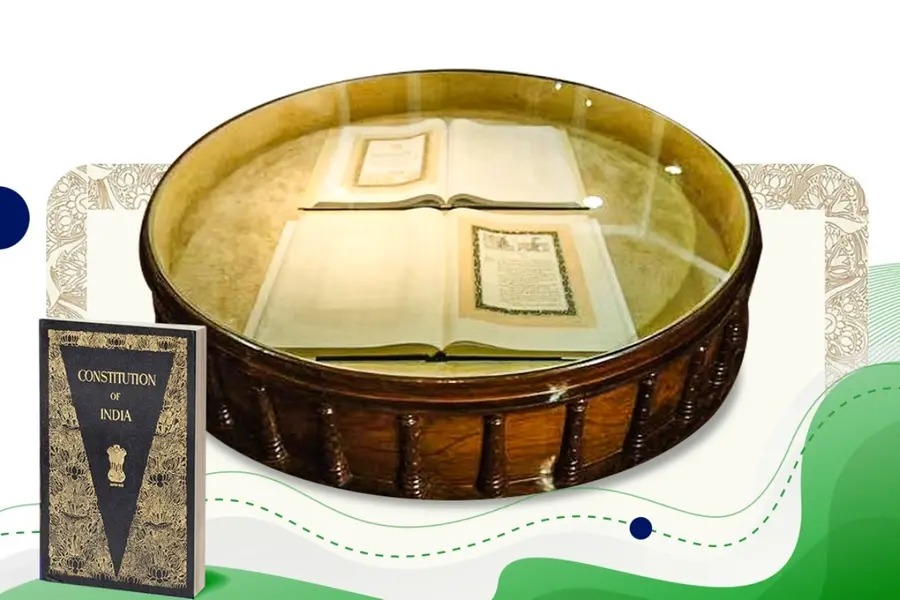India’s priceless original handwritten Constitution is carefully preserved in a nitrogen-filled airtight chamber at the Parliament Library to prevent deterioration. This scientific preservation technique protects the document from oxidation, humidity, microbes, and pollution, ensuring the longest handwritten constitution remains intact for future generations.
Every year on November 26, India celebrates Samvidhan Divas to honor the adoption of its Constitution, the world’s longest handwritten legal document. Crafted with exquisite calligraphy by Prem Behari Narain Raizada and decorated by Shantiniketan artists, the Constitution is a priceless artifact vulnerable to damage over time.
To safeguard this historic document, India adopted a cutting-edge preservation method in 1994, placing the Constitution inside a hermetically sealed glass chamber filled with nitrogen gas. Nitrogen is an inert gas that prevents oxidation—a chemical reaction that would otherwise fade the black ink and degrade the paper’s cellulose fibers. The chamber environment maintains a controlled humidity level of 40-50% and contains less than 1% oxygen to inhibit deterioration from microbes, air pollution, and acids.
This airtight, nitrogen-filled case is regularly monitored with sensors, with annual gas renewal and bi-monthly inspections under CCTV surveillance, maintaining optimal conditions for long-term preservation. This technique was developed in collaboration with India’s National Physical Laboratory and the Getty Conservation Institute, inspired by similar practices used for the U.S. Constitution.
Hence, the original Constitution rests securely in this nitrogen chamber, protected scientifically to endure centuries as a symbol of India’s sovereignty, democracy, and cultural heritage.
Source: NDTV, Republic World, Mathrubhumi, News24Online.
